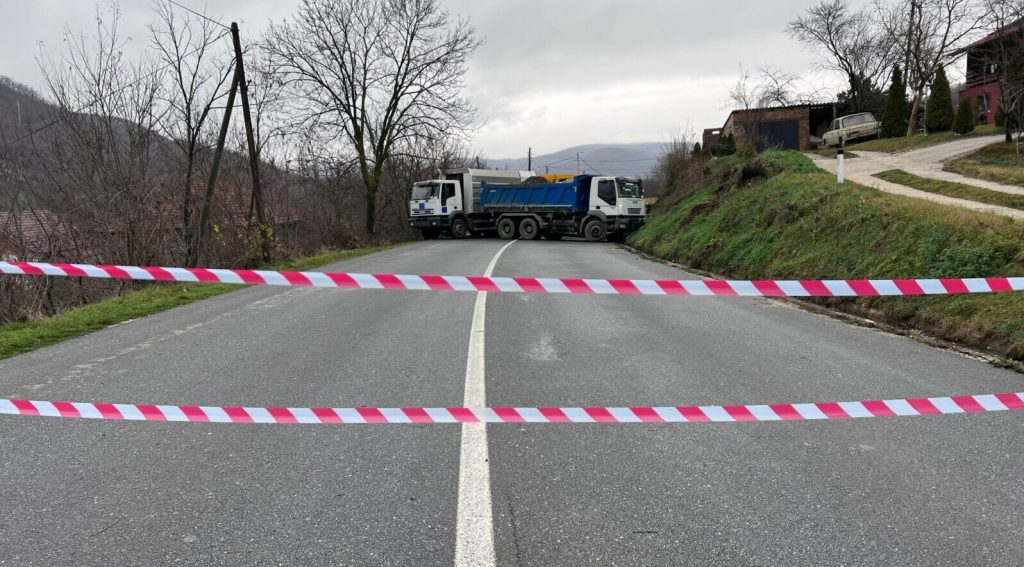Serbia and Kosovo: EU-Backed Agreement Seeks Regional Stability
A new verbal agreement to try and improve relations between Serbia and Kosovo was concluded in February and March 2023. But against a backdrop of unclarity about provisions of the deal and instability in northern Kosovo, can it really bolster unity?
Since Kosovo declared independence from Serbia in 2008, Serbia has refused to recognize Kosovo as a state. Even though the recently adopted new agreement does not solve the fundamental tension between Belgrade’s and Pristina’s opposing understandings of Kosovo – as a breakaway province and as an independent state – it does offer a way forward on how to bridge this divide. The deal stipulates that Serbia will recognize Kosovo’s documents and national symbols and will not oppose Kosovo’s membership of international organizations. It would essentially represent Serbia’s de facto recognition of Kosovo. At the same time, it foresees that Kosovo will guarantee an appropriate level of self-management for the Serb community in Kosovo. This agreement is the culmination of diplomatic efforts to stabilize this region amid Russia’s war in Ukraine and heightened tensions between Serbia and Kosovo, especially in northern Kosovo, since mid-2022.
Until recently, there was a trend of improving relations between Serbs and Albanians in Kosovo. As the Bertelsmann Country Report for Kosovo in 2022 noted, “cooperation between Kosovo Serbs and the [Pristina] government has improved since Belgrade accepted Pristina’s authority over majority Serb areas (North Kosovo) in exchange for increased autonomy for Kosovo Serbs in the EU-coordinated Brussels agreement of 2013.” This agreement led to the integration of Kosovo Serbs into Kosovo’s judicial system and police force, and also provided for the establishment of the Association/Community of Serb-majority Municipalities (A/CSM), a mechanism to grant these municipalities greater autonomy in areas like health and education. To date, it has not been established, although the new 2023 agreement foresees its implementation.
Tensions in northern Kosovo
Since mid-2022, however, relations between the Serb community in the north and the Kosovo government have deteriorated. Tensions arose over Pristina’s decision to fine drivers of vehicles with Serbia-issued license plates for cities in Kosovo, which Kosovo considers illegal. The decision mainly affected Serbs from the north. In addition, due to the Kosovo government’s continued refusal to establish the A/CSM, the Serbs in the north resigned en masse from their positions in Kosovo institutions, including the judiciary and police. This has created a security vacuum similar to the one that existed before the 2013 integration of Serbs into Kosovo’s institutions. The resignations were encouraged by Belgrade. In late April, north Kosovo Serbs boycotted the local elections. As expected, Kosovo Albanian representatives were elected as mayors of the four Serb-majority municipalities in the north, and with a voter turnout of 3.5 percent, the legitimacy of the election is in question.
In light of these recent developments, the question is how the new 2023 agreement can be implemented if Serbs in one part of Kosovo, namely the north, do not participate in Kosovo’s political life.
A flawed deal?
One frequently voiced criticism of the new agreement that it was presented as a “take it or leave it” deal by the EU and the US, meaning a lack of ownership on the part of Serbia and Kosovo. In addition, some civil society actors from northern Kosovo have characterized the agreement as being alienated from the local community, dealing with high-level political issues (such as mutual recognition) instead of how to improve the lives of the local population, which is the official mandate of the Brussels Dialogue.
More importantly, why has this kind of hostility become the new norm in northern Kosovo, when only a few years ago relations were clearly improving?
On the one hand, pressure from Belgrade has convinced the Serbs to leave the institutions as a kind of political gamble, hoping to win concessions for Belgrade in the ongoing talks on the new agreement. This tactic has partially paid off, as the commitment to implement the A/CSM has returned to the forefront of the dialogue. However, this move mainly benefited Belgrade and left the Serb community worse off, especially in terms of security.
On the other hand, the new Kosovo government’s bid to turn the page on its engagement with Serbia and insist on the implementation of reciprocal measures has raised tensions in the north in the first place. High tensions tend to forge ethnic divisions, meaning the development gives Belgrade scope for manipulation to its own advantage.
But what can be done to reduce tensions and ensure the implementation of the new agreement? First and foremost, the EU needs Belgrade to work constructively towards a solution, as in 2013 when the Brussels agreement was brokered. Only if there is full participation of Kosovo Serbs in Kosovo institutions can any of the agreements reached so far be implemented. As a first step, Belgrade should encourage Kosovo Serbs to return to the institutions as this would send a clear signal of constructive re-engagement, which would also benefit Kosovo Serbs, returning them a degree of power. North Kosovo Serbs have already voiced their discontent with Belgrade and the largest Kosovo Serb party – Lista Srpska – as a result of leaving institutional participation. Belgrade should therefore loosen its political grip on Lista Srpska and encourage political pluralism amongst the Serb community both north and south of the Ibar River. However, there are no signs that this will happen anytime soon. The monopolization of Serb representation in Kosovo by the Lista Srpska follows a trend of monopolization of political representation by the governing SNS party in Serbia – led by the Serbian President.
Secondly, Pristina should refrain from actions that fan tensions in the north. For example, by postponing the opening of the main bridge in Mitrovica, a symbol of ethnic division since 1999, until Serbs have returned to Kosovo’s institutions. Pristina should use the opportunities opened up by the north Kosovo Serbs’ discontent with Belgrade and Lista Srpska to initiate an honest dialogue with the Serb community there, rather than resorting to unilateral measures that could inflame the situation further.
Finally, the EU should use the “donor conference” mentioned in the deal – scheduled to take place five months after the deal’s adoption – to ensure its implementation. If funding for both Belgrade and Pristina is dispersed based on recent progress, it can be used as a political lever to ensure the implementation of at least some parts of the deal. Progress on issues such as Serbia’s de facto recognition of Kosovo, or establishing the A/CSM institutionally might take longer than five months, but as an interim measure, the donor conference might be able to edge the region beyond stalemate and help improve – if not Kosovo-Serbia relations internationally – then at least the political situation in the north.

